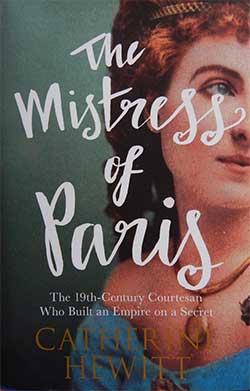 Take a walk on the wild side of Belle Epoque Paris with this biography of Emile-Louise Delabigne, known as countess Valtesse de la Bigne (1848-1910). who was a legendary French courtesan and demi-modaine. Her lovers included countless painters, writers and politicians, while her affairs with women caused a scandal in turn-of-the-century Paris. She was painted by Édouard Manet and inspired Émile Zola, who immortalized her in his scandalous novel “Nana.”
Take a walk on the wild side of Belle Epoque Paris with this biography of Emile-Louise Delabigne, known as countess Valtesse de la Bigne (1848-1910). who was a legendary French courtesan and demi-modaine. Her lovers included countless painters, writers and politicians, while her affairs with women caused a scandal in turn-of-the-century Paris. She was painted by Édouard Manet and inspired Émile Zola, who immortalized her in his scandalous novel “Nana.”
“The Mistress of Paris,” by Catherine Hewitt, revisits the incredible tale of this man-eating Belle Epoque Belle who clawed her way up from impoverished origins to become one of the most sought-after and glamorous women in Paris. Aiming high Louise created for herself a new persona and became ‘Valtesse,’ a contraction of the French ‘Votre Altesse,’ or ‘Your Highness.’ She reached the summit of her fame during the 1870s.
At Valtese’s magnificent townhouse on Blvd. Malesherbes, built for her by Prince Sagan, she hosted lavish soirees attended by Tout-Paris. Her sumptuous weekend house at Ville-d’Avray was decorated with paintings she commissioned Edouard Detaille showing fictional members of her invented “La Bigne family.” Valtesse’s regal bronze-guilt “lit de parade” —inspired by Louis XIV bed at the Versailles Palace— can still be seen at the Musee des arts decoratifs de Paris.
This well researched biography is not only about the life of a courtesan, it is also about the society in which she moved. Evoking the attitudes and atmosphere of mid to late nineteenth-century Paris in all its hedonistic glory, Hewitt’s biography tells (for the first time in English) the story of a remarkable woman who, though her roots were lowly, never stopped aiming high.
The Mistress of Paris, The 19th-Century Courtesan Who Built an Empire on a Secret by Catherine Hewitt, Thomas Donne Books.

